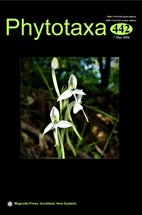Abstract
This paper presents the results of a detailed study of leaf blade anatomical traits of populations of the Sesleria juncifolia complex from the Balkan Peninsula. The measurements were performed on cross sections of 302 tiller leaf blades from 24 populations. We calculated basic descriptive statistics for each character state. Principal component and canonical discriminant analyses were used to identify the structure of variability and the characters that majorly contributed to the differentiation of the defined groups. Cluster analysis was done to estimate the distances among the studied populations. We provide a detailed description of the leaf blade anatomy of the different populations of S. juncifolia complex investigated within Croatia, Bosnia and Herzegovina, Montenegro, Serbia and North Macedonia. The results show that most of the characters exhibit moderate degrees of variation. The principal component analysis shows slight separation of populations from northwestern Croatia. Canonical discriminant analysis shows that the three a priori defined groups—three species, S. interrupta, S. juncifolia and S. ujhelyii, can be distinguished based on leaf blade anatomical characters. In addition to the characters that were singled out as statistically most significant for differentiation of the three species in discriminant function analysis, the most useful characters for their delimitation are the length of the trichomes on the adaxial side of the leaf, as well as qualitative characters such as the sclerenchyma on the abaxial side of the leaf (continuous or interrupted) and the type of indumentum of the adaxial side of the leaf (very hairy, hairs long vs. very weakly hairy, hairs short). The northwestern populations of S. juncifolia mostly have glabrous leaves or single hairs on the adaxial side of the leaf, while in S. interrupta and S. ujhelyii populations, individuals always have hairy leaves. The presence of continuous subepidermal sclerenchyma has proven to be a good differential character for separating S. ujhelyii from the S. juncifolia and S. interrupta.

